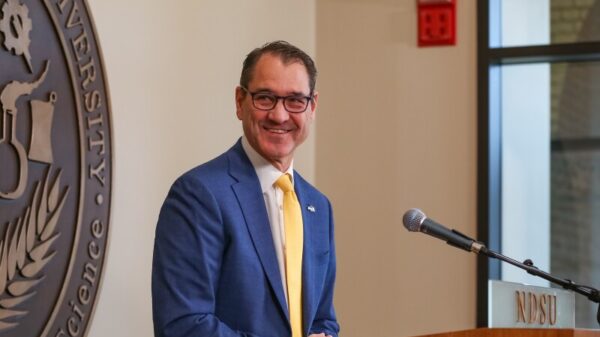Clinical trials, essential for developing new treatments, are experiencing a crisis of sustainability. Recent insights from GlobalData reveal that as the number of trials continues to rise, the resources needed to conduct them are dwindling. This imbalance threatens to delay the arrival of innovative therapies for patients who desperately need them.
The demand for clinical trials is escalating. Between 2018 and 2022, the number of oncology assets in development surged by 13% annually. While this growth appears promising, it is projected to more than triple the demand for patient enrollment in trials by 2032. The current clinical trial ecosystem lacks the capacity to meet this increasing demand, leading to a slowdown in drug development.
As more trials emerge, the need for additional study sites becomes urgent. Each site must manage an increasing number of trials while also achieving higher enrollment productivity. Unfortunately, this is happening against the backdrop of a dwindling clinical trial workforce. Over 80% of research sites in the United States report staffing shortages in oncology research, primarily due to unrealistic job expectations and insufficient compensation.
According to GlobalData, the number of clinical trial investigators globally has decreased from approximately 128,303 in 2017 to about 116,948 in 2023, marking a nearly 10% decline. The situation is more severe for trial site coordinators, whose numbers fell from 56,036 to 40,472 in the same timeframe. Many professionals have exited the field since the onset of COVID-19, resulting in longer startup times for new studies as sponsors struggle to find qualified investigators.
Compounding these issues is the persistent challenge of participant recruitment. The primary reason for trial terminations is inadequate patient levels, with around 60%-70% of trial sites failing to meet their initial enrollment targets. This inefficiency leads to wasted resources spent on non-enrolling sites, including contracting and training expenses.
While academic medical centers continue to conduct the majority of trials, community hospitals often lack the necessary resources to participate at scale. Kent Thoelke, CEO of Paradigm Health, highlights that only 5%-8% of eligible patients participate in clinical trials, a statistic that has remained stagnant for years. The low participation rates create a significant barrier to meeting the growing demand for trial enrollment.
Geographic disparities further complicate the situation. According to ClinicalTrials.gov, nearly 26,000 clinical trials were actively seeking participants across the United States as of May 2025. Coastal states with large urban centers recruit the highest numbers, while vast areas, particularly rural communities, remain largely excluded from access to these trials. Research by the Milken Institute indicates that individuals in agricultural counties must travel more than 60 miles to participate in a trial compared to those living in urban settings.
As treatments become increasingly personalized, the patient pool shrinks, complicating recruitment efforts. In competitive oncology trials, numerous studies vie for the same limited pool of eligible participants, resulting in many trials failing to meet enrollment criteria. Although oncology trials face the most significant challenges, other therapeutic areas, such as Alzheimer’s disease and rare diseases, are also struggling to attract participants.
The FDA mandates that trials conducted for drug approval include patients representative of the US population. Unfortunately, the proportion of US patients in applications submitted to the FDA has been declining. A recent oncology drug advisory committee rejected a drug based on concerns that data collected outside the US lacked applicability to the US population. With the increasing pressure to include more US participants, enhancing access to trials is crucial for delivering new treatments to patients.
Financially, clinical trials are becoming prohibitively expensive. A report from GlobalData indicates that costs have steadily risen, with single-country trials increasing by 2.9% annually and multinational studies by 4.9% over the past decade. Oncology trials are particularly costly, averaging nearly $30 million for a Phase 1 trial and almost $60 million for a Phase 3 trial, with some trials exceeding $100 million in direct costs.
The combination of rising trial costs and longer timelines creates a significant financial burden for sponsors, who incur additional expenses for each day a trial remains open. With an average of $500,000 in lost revenue for every day a drug launch is delayed, the financial implications are substantial, especially in light of the recent changes to market exclusivity rules under the 2022 Inflation Reduction Act.
As the clinical trial landscape faces unprecedented challenges, experts like Thoelke advocate for a transformative approach to trial design and execution. The COVID-19 pandemic demonstrated that flexible trial protocols could enhance patient access and participation. Many of these adaptations, such as electronic consent and telemedicine, have been rolled back, reverting to outdated practices.
Paradigm Health is developing an AI-driven platform to address inefficiencies in patient identification and recruitment while alleviating data collection burdens. This technology aims to empower community healthcare systems to conduct complex trials, ensuring that rural patients have equitable access to cutting-edge treatments.
As the industry grapples with these pressing issues, the need for reform is clear. Without significant changes in trial models and patient access strategies, the future of clinical research and the delivery of new therapies could be at risk. Embracing innovation and equity in clinical trial participation is essential to advance medical science and improve patient outcomes.







































































